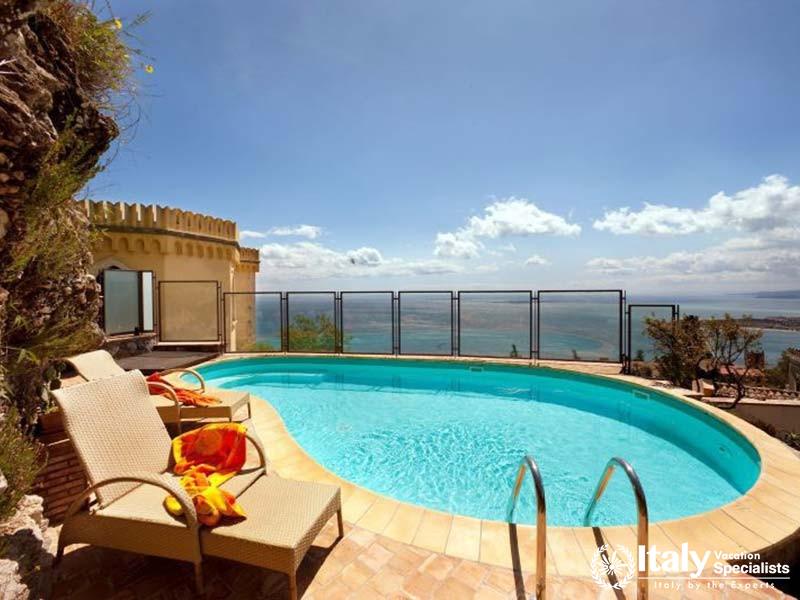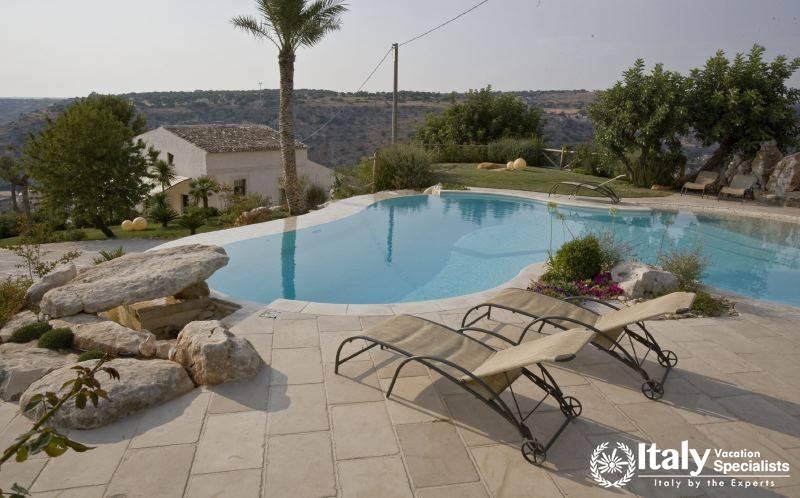Overview
Termini Imerese is a large town located on western Sicily's north coast between Cefalu and Palermo. The population of the town is is about 26,000. It lies about 38 kilometers north of Sicily's capital city - Palermo whichi is about 45 minutes by train or car. It is divided into two parts: Termini Bassa (Lower Termini) and Termini Alta (Upper Termini) and almost all of the town's historical attractions are located in Termini Alta, since that area effectively comprises the town's old historic center. Lower Termini is where the railway-bus station and the hotels are located.
It's an interesting stop to make and many descendants from Sicily who left to go to north America happen to come from this town or the surrounding area, so if you happen to be coming back here to explore your family's history, it's definitely a very interesting stop to make, for it is wedged in between the sea and the steeply-rising slopes of Monte San Calogero, the peak that marks the beginning of the Madonie Mountain Range which runs east towards Messina and south to the vicinity of Enna.
From the sea, Termini presents a picture-postcard image of a Sicilian seaside town. The view from Termini looking out over the sea to Palermo is likewise spectacular. Termini is famous for its elaborate Carnival (Mardi Gras) festival, which is ranked along with Acireale's and Sciacca's Carnevales as one of the best in Sicily.
The name Termini Imerese is derived from the Latin "Thermae Himerenses" or "Hot Springs of Himera." Indeed, the remains of arched Roman aqueducts are visible at Termini. The name also derives from the toponymic "Imera" which was the name the ancient Greeks applied to the settlement near present-day Termini that they came to occupy. The story of Imera is the only historically noteworthy episode that can be linked to the ancient history of Termini Imerese.
Imera was founded in 678 BC by Greek colonists from Zancle (Sickle), modern Messina. Zancle itself had been founded in the previous century by Greek colonists. It is probable that a prehistoric settlement already existed there, populated by Sicanians.
The Greek town of Imera represented the furthest westward penetration of the Greeks on the North Coast of Sicily, and thus, represented a threat to the Carthaginians, who had colonized the western area of Sicily and founded Palermo and Solunto, the latter city being only 30 kilometers distant from Imera. In 480 BC, the Carthaginians decided to invade the region. Hamilcar, a Carthaginian general who was an ancestor of the famous Hannibal who later fought the Romans, assembled an army said to number 30,000 men to march upon Imera. The Greeks of Imera sought and received help from their fellow Greeks of Agrigento and Syracuse. The three combined Greek armies literally massacred the Carthaginians, and thus the Carthaginian threat to the Sicilian Greeks was effectively eliminated, at least for the remainder of that century.
In 409 BC, Hannibal, grandson of Hamilcar, led a large Carthaginian army against Imera. This time, the Greeks were defeated and Imera was destroyed. It is believed that the survivors of the battle fled to either Termini or Caccamo (famous for its Norman castle), and founded the two towns or developed existing settlements.
Most of Termini's sights are located within walking distance of one another. At Piazza Duomo, we have, of course, the Duomo, or Mother Church, dedicated to San Nicola di Bari (St. Nicholas of Bari), "Santa Claus." Built in the late 1400's, it houses a painted cross by Pietro Ruzzolone dating from 1484. However, the church was extensively renovated during the 1600's and that accounts for the many Baroque Period works of art it contains.
Proceeding towards the sea, one comes to Principe di Piemonte (Prince of Piedmont) Belvedere, which offers panoramic views of the sea. At the end of the Belvedere, the winding road which is called "Circonvallazione Castello" leads you downhill to the Villa Palmieri, a public park and garden with plenty of shade trees. Completed in 1845, the Villa contains the remnants of an old Roman structure, which was either the town forum or the basilica of an early Christian church; scholars are in disagreement over which of the two it was.
Leaving the Villa and doubling back towards Piazza Duomo along Via Barrinelli, one arrives at the church of Santa Caterina (St. Catherine). The church was erected in the 1400's and has frescoes dating from that era painted by the brothers Nicolò and Giacomo Graffeo.
The Civic Museum is on Via del Museo. The Museum has an extensive and interesting exhibition for a relatively small city like Termini. It is is open daily from 9:00 to 1:00, when visitors can view its collection of ancient archaeological objects from the nearby area, and a good numismatic collection. Several of the lions' heads from Imera's Temple of Victory are located here; others are housed in the archaeological museum in Palermo. There is also a large stone slab with Arabic inscriptions written upon it, believed to have been suspended over the city gates of Termini during the period of Saracen domination.
By Jesse Andrews, August 2, 2007
Gallery
Location
Private and Small Group Tours
Multi-Day Holidays Tours
Hotel
Villas
Apartment
Gallery



For Customized Holidays and Expert Advice, for travel in Italy and the Mediterranean,
get in touch with your travel agent or contact us via our
Trip Planning Questionnaire.
-
Direct In Italy: +39 375 823 5314
-
Toll Free: 1-866-779-2565
























